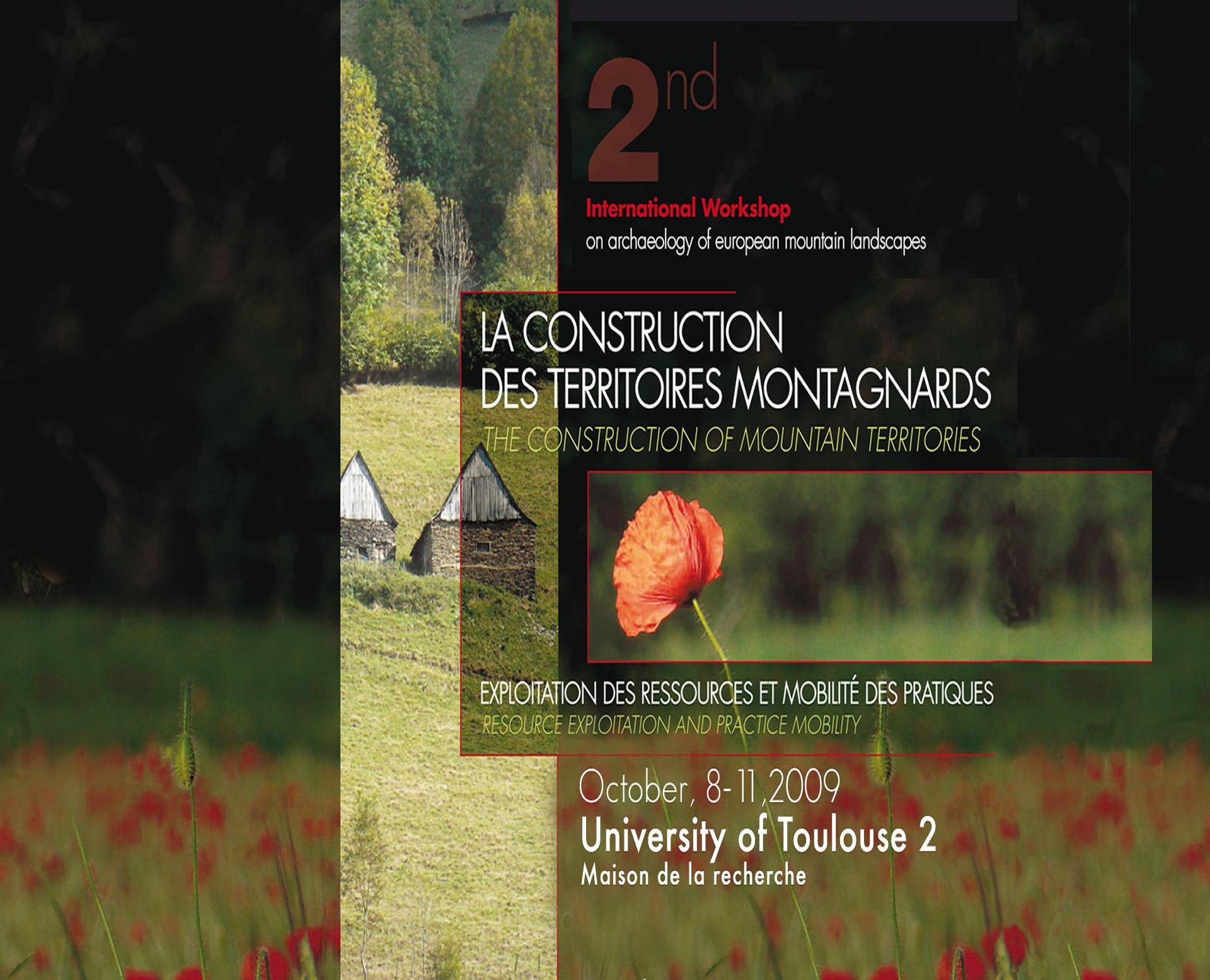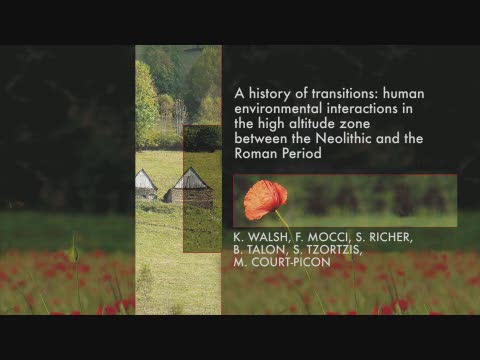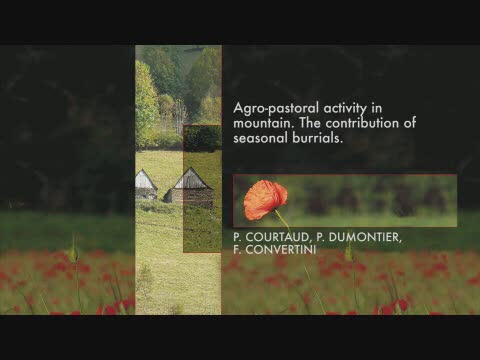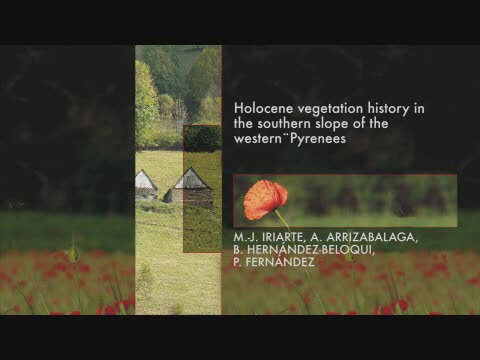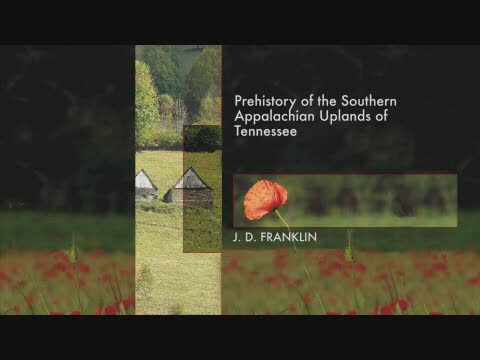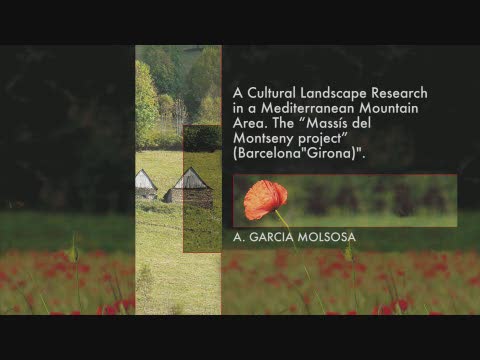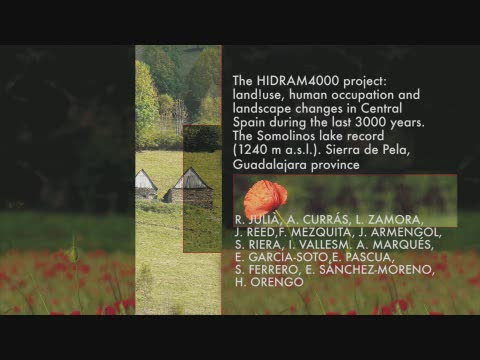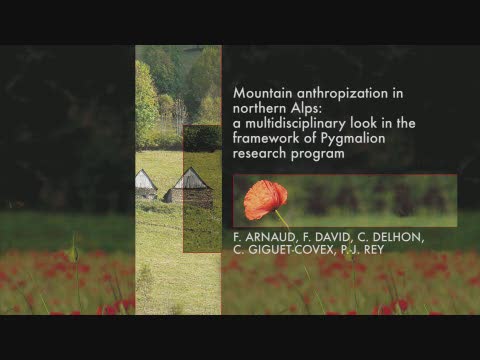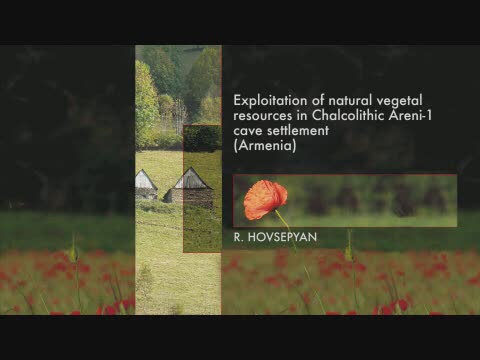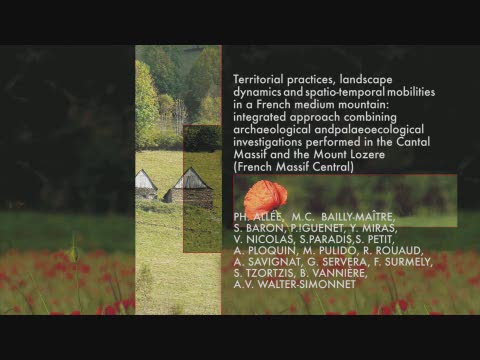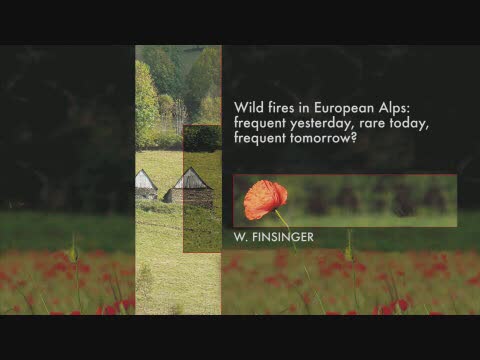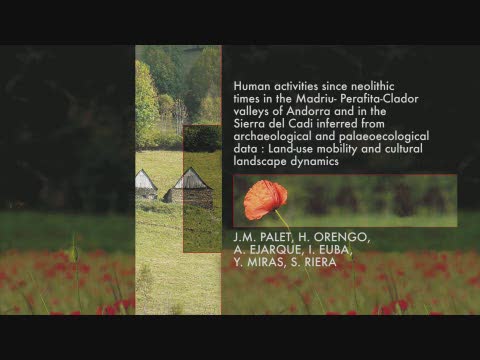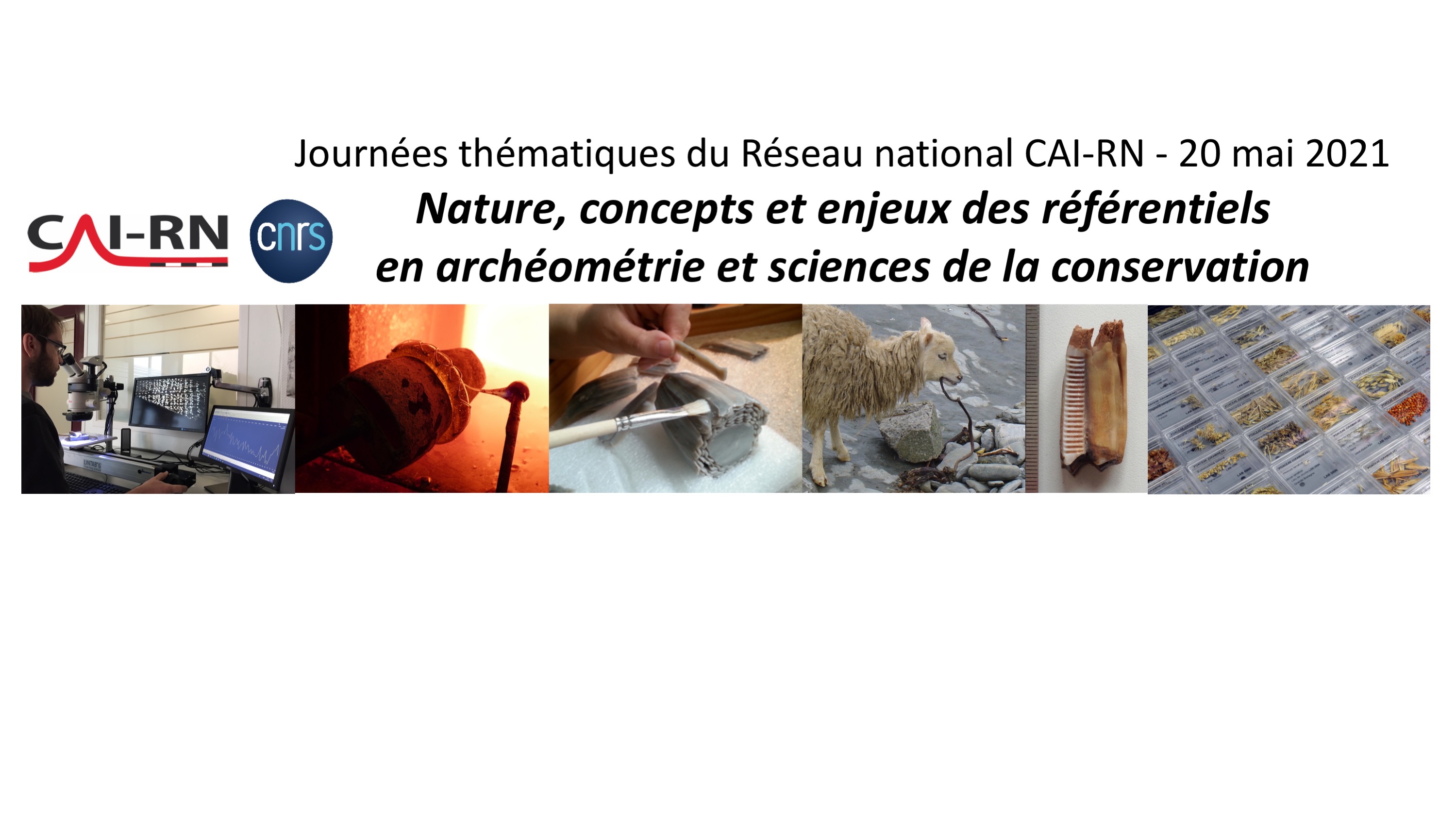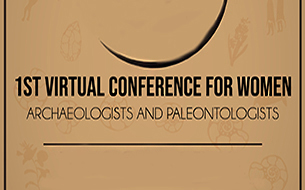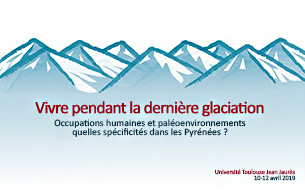Notice
New data about the human occupation, environmental history, landscape changes in Pyrenees / Emengol Gassiot
- document 1 document 2 document 3
- niveau 1 niveau 2 niveau 3
Descriptif
The Excava project : new data about the human occupation, environmental history and landscape changes in southern Pyrenees. Emengol GASSIOT BALLBE. In "La construction des territoires montagnards : exploitation des ressources et mobilité des pratiques", 2e International Workshop on archaeology of european mountain landscape, organisé par les laboratoires GEODE, FRAMESPA, GEOLAB et Chrono-Environnement. Université Toulouse 2-Le Mirail, 8-11 octobre 2009. [seconde journée]
Recent multidisciplinary researches in western Catalan Pyrenees have provided abundant data on the human occupation and the environmental history that permit state some models about the landscape changes and the factors involved in. Surface archaeological surveys permitted to document hundreds of evidences of past occupation of alpine and subalpine areas since the beginning of the Holocene until the present. The extensive archaeological diggings of the "Sardo Cave" and "Estany de la Coveta Rockshelter" confirm the intensive middle and recent Neolithic occupations (5500 to 4400 calBP) showed by the absolute dating of many sites. This paper summarizes these archaeological data and confronts them with the paleoecological evidence provided by the sedimentary cores of "Estany de la Coma de Burg" and "València d’Àneu". The agreements and disagreements of the two kinds of evidences are discussed in order to understand the past models of human settlement and exploitation of high mountain Pyrenean environments and their changes trough the time.
Intervention
Dans la même collection
-
La construction des territoires montagnards : exploitation des ressources et mobilité des pratiques…
GalopDidierThe occupation and the exploitation of mountain environments, both during conquest and maximum demographic phases, or on the contrary, during desertification phases, differ in geographical
-
Human environmental interactions in high altitude zone between Neolithic and roman period / K. Walsh
WalshKevinA History of Transitions : human environmental interactions in the high altitude zone between Neolithic and roman period. Kevin WALSH. In "La construction des territoires montagnards : exploitation
-
L'agro-pastoralisme en milieu montagnard : l'apport des sépultures saisonnières / Patrice Courtaud
CourtaudPatriceL'agro-pastoralisme en milieu montagnard : l'apport des sépultures saisonnières. Patrice COURTAUD. In "La construction des territoires montagnards : exploitation des ressources et mobilité des
-
L'évolution végétale holocène sur le versant sud des Pyrénées occidentales / Maria-José Iriarte
IriarteMaría JoséL'évolution végétale holocène sur le versant sud des Pyrénées occidentales. Maria José IRIARTE. In "La construction des territoires montagnards : exploitation des ressources et mobilité des pratiques"
-
Prehistory of the Southern Appalachian uplands of Tennessee / Jay Franklin
FranklinJay D.Prehistory of the Southern Appalachian uplands of Tennessee. Jay FRANKLIN. In "La construction des territoires montagnards : exploitation des ressources et mobilité des pratiques", 2e International
-
A cultural landscape research in a mediterranean mountain (Barcelona-Girona) / A. Garcia Molsosa
Garcia MolsosaArnauA cultural landscape research in a mediterranean mountain area : the "Massis del Montseny project" (Barcelona-Girona) / A. GARCIA MOLSOSA. In "La construction des territoires montagnards :
-
The Hidram4000 project : land use, human occupation and lanscape changes in Spain / A. Curras
Currás DominguezAndresThe Hidram4000 project : land use, human occupation and lanscape changes in Spain during the last 3000 years. The Somolinos lake record (1240 M A.S.L.) : Siera de Pela, Guadalajara Province. Andres
-
Mountain anthropization in Alps : a multidisciplinary look in the Pygmalion program / F. Arnaud
ArnaudFabienMountain anthropization in Alps : a multidisciplinary look in the framework of Pygmalion research program. Fabien ARNAUD. In "La construction des territoires montagnards : exploitation des ressources
-
Exploitation of natural vegetal resources in chalcolithic areni-1 cave (Armenia) / R. Hovsepyan
HovsepyanRomanExploitation of natural vegetal resources in chalcolithic areni-1 cave settlement (Armenia). Roman HOVSEPYAN ovsepyan, Roman. In "La construction des territoires montagnards : exploitation des
-
Territorial practices, landscape dynamics and mobilities in a french mountain / P. Allée, Y. MIras
AlléePhilippeMirasYannickTerritorial practices, landscape dynamics and spatio-temporal mobilities in a french medium mountain : integrated approach combining archaeological and paleoecological inverstigations performed in the
-
Wildfires in european alps : frequent yesterday, rare today, frequent tomorrow ? / W. Finsinger
FinsingerWalterWildfires in european alps : frequent yesterday, rare today, frequent tomorrow ?. Walter Finsinger. In "La construction des territoires montagnards : exploitation des ressources et mobilité des
-
Exploitation des vallées andorranes depuis le Néolithique/ J.-M. Palet Martinez, H. Orengo Romeu
Palet i MartínezJosep M.Orengo RomeuHèctor A.L'exploitation des ressources des vallées andorranes du Madriu-Perafita-Claror et de la chaîne du Cadi (Pyrénées orientales) depuis le Néolithique à partir des données archéologiques et
Sur le même thème
-
Alfredo Mayoral - « Gergovie : nouvelles recherches géoarchéologiques et paléoenvironnementales »
Le jeudi 16 septembre 2021, à 20h30, sur Facebook, Page Musée de Gergovie, Alfredo Mayoral, géoarchéologue, à l'Institut Catalan d’Archéologie Classique et à GEOLAB (UMR 6042 CNRS / UCA UNILIM), a
-
M. DJAMALI et M. MASHKOUR, Réflexions sur la contribution des coprolithes de hyènes modernes comme …
Réflexions sur la contribution des coprolithes de hyènes modernes comme référentiel pour les reconstitutions paléoenvironnementales. Morteza DJAMALI1, Marjan MASHKOUR2 1-CNRS, IMBE (morteza
-
"Ouranopithecus macedoniensis" (late Miocene, Greece): analysis of mandibular fragments using …
IoannidouMelaniaOuranopithecus macedoniensis (late Miocene, Greece): analysis of mandibular fragments using 3D geometric morphometrics / Melania Ioannidou, in colloque "1st Virtual Conference for Women
-
What is shaping the brain? A perspective on brain size evolution in carnivorans / Margot…
MichaudMargotWhat is shaping the brain? A perspective on brain size evolution in carnivorans / Margot Michaud, in colloque "1st Virtual Conference for Women Archaeologists and Paleontologists. Nouveaux
-
A transdisciplinary approach to reconstruct the Nilotic socio-ecosystem in Luxor west bank during t…
NicatoreGiuliaA transdisciplinary approach to reconstruct the Nilotic socio-ecosystem in Luxor west bank during the Ptolemaic period (3rd-1st centuries BC.) / Giulia Nicatore, in colloque "1st Virtual Conference
-
Neanderthal facing climatic disruptions of the MIS 4 in southwestern France: between cynegetic choi…
DancetteChristelleNeanderthal facing climatic disruptions of the MIS 4 in southwestern France: between cynegetic choices and environmental constraints / Christelle Dancette, in colloque "1st Virtual Conference for
-
Revising the microvertebrates from the Palaeolithic site of Kalamakia (Mani Peninsula), Greece / Ko…
KolendrianouMariaRevising the microvertebrates from the Palaeolithic site of Kalamakia (Mani Peninsula), Greece / Kolendrianou Maria, in colloque "1st Virtual Conference for Women Archaeologists and Paleontologists.
-
Vivre pendant la dernière glaciation. Occupations humaines et paléoenvironnements : quelles spécifi…
LejayMathieuVivre pendant la dernière glaciation. Occupations humaines et paléoenvironnements : quelles spécificités dans les Pyrénées ? Introduction / Mathieu Lejay
-
Environnements glaciaires et fluvioglaciaires dans les Pyrénées au cours de la dernière Terminaison…
DelmasMagaliEnvironnements glaciaires et fluvioglaciaires dans les Pyrénées au cours de la dernière Terminaison glaciaire / Magali Delmas
-
Chronologie des fluctuations glaciaires dans les Pyrénées au cours du Global LGM et de la dernière …
ReixachThéoChronologie des fluctuations glaciaires dans les Pyrénées au cours du Global LGM et de la dernière Terminaison glaciaire : données nouvelles et implications paléo-climatiques / Théo Reixach
-
Le Gravettien sur le versant sud des Pyrénées occidentales. Nouvelles données, études paléo-environ…
ArrizabalagaAlvaroLe Gravettien sur le versant sud des Pyrénées occidentales. Nouvelles données, études paléo-environnementales et proposition territoriale / Alvaro Arrizabalaga
-
L’occupation anthropique du versant nord pyrénéen entre 26 et 21 ka cal BP : entre dynamiques cultu…
LejayMathieuRenardCarolineL’occupation anthropique du versant nord pyrénéen entre 26 et 21 ka cal BP : entre dynamiques culturelles et processus taphonomiques


